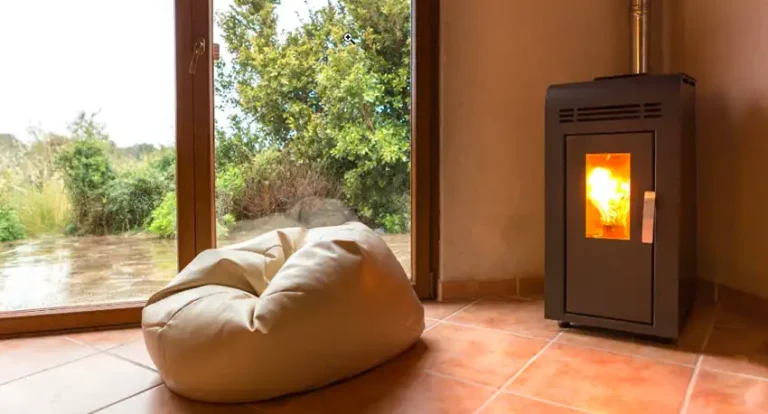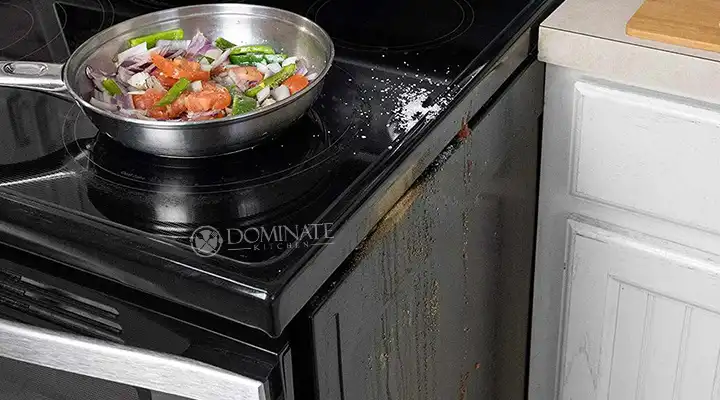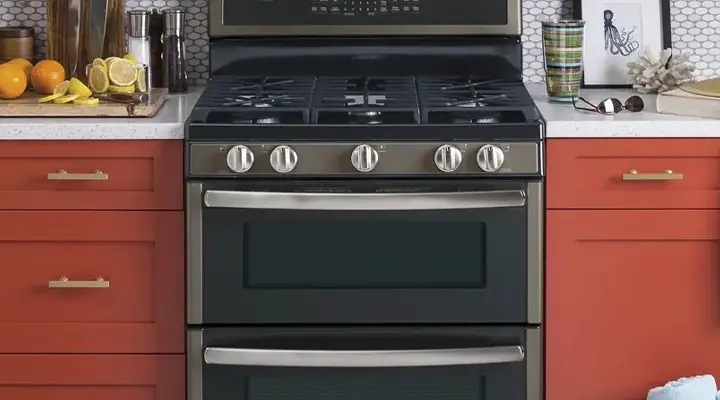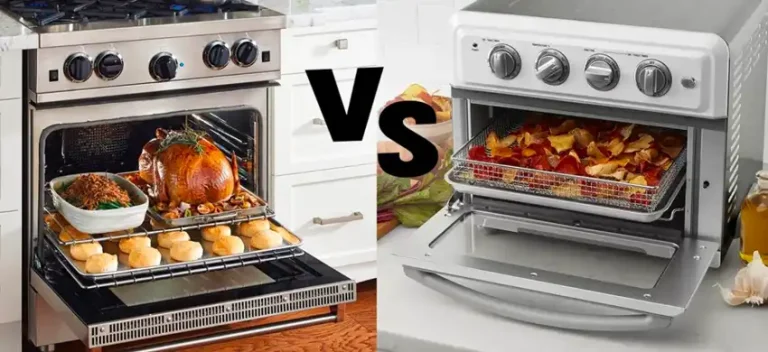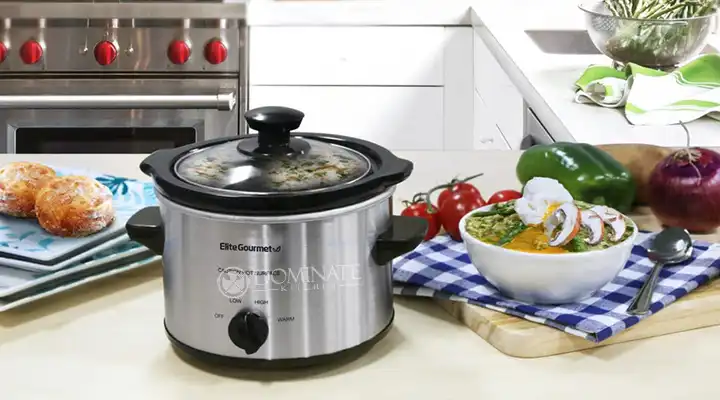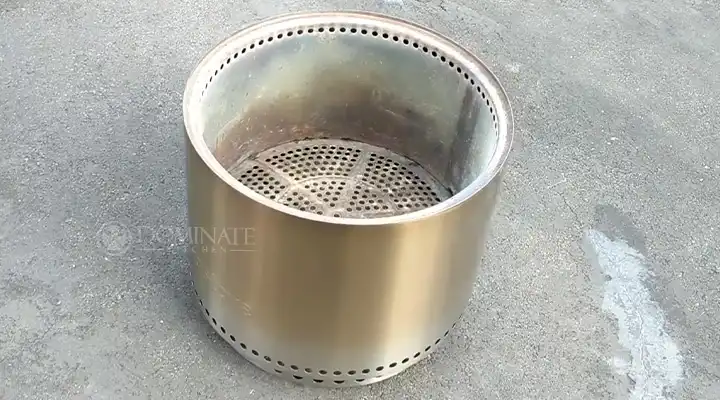What is Medium Low Heat on Stovetop? Let’s Find Out
In the everyday world of home cooking, understanding the concept of “medium-low heat on the stovetop” is more vital than it might seem. This understated setting, nestled between the low and medium ranges, holds the key to achieving the right balance of warmth for various dishes.
To make medium-low heat more understandable, I’ll talk about its temperature range (about 300-325 degrees Fahrenheit or 150-163 degrees Celsius), identify where it sits on your stove, explore the foods it works best with, and learn some practical tips to harness its potential.
So, if you’re interested in getting a complete idea about this particular heat level, I would suggest you read the article till the end. Now, without delaying any more, keep reading.
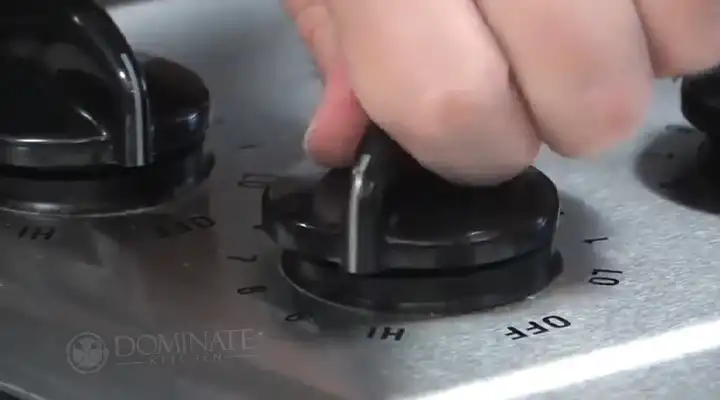
What Temperature Does Medium-Low Heat Mean On The Stovetop?
Medium-low heat on a stovetop is a crucial setting for achieving precise cooking results. This setting typically maintains a temperature range of around 300-325 degrees Fahrenheit (150-163 degrees Celsius). It strikes a balance between being warm enough to cook food thoroughly and evenly while avoiding the risk of overheating or scorching. Understanding the temperature associated with medium-low heat is fundamental for achieving culinary success in various dishes.
What Stove Setting Represents Medium-Low Heat?
Different stovetops may have varying temperature settings and control mechanisms, but in most cases, medium-low heat is indicated by setting the burner knob or dial to a position that’s roughly between the “Low” and “Medium” settings. The precise placement can vary from one stove to another, so it’s advisable to get familiar with your specific stove’s settings to identify the medium-low heat position accurately.
It’s essential to pay attention to the cooking surface as well. For electric stovetops, medium-low heat typically corresponds to setting the dial to around 3 or 4 on a scale of 1 to 9. On a gas stove, it often means turning the flame to a level where it’s low but not at its lowest.
What Can You Cook on Medium-Low Heat?
Medium-low heat is the ideal choice for a wide range of dishes that require slow, gentle, and even cooking. For example: this temperature setting is perfect for –
Stews
Stews benefit from cooking slowly to allow the flavors to meld, and medium-low heat is perfect for simmering them to perfection.
Soups
Like stews, soups also benefit from simmering on medium-low heat to extract the full flavor of the ingredients.
Sauces
Many sauces, such as tomato sauce, alfredo sauce, or béchamel, require a gentle simmer to thicken and intensify flavors without burning.
Rice
Medium-low heat ensures that rice cooks uniformly and doesn’t stick to the pot.
Oatmeal
Cooking oatmeal on medium-low heat prevents it from sticking to the pan while achieving a creamy consistency.
Pancakes and Waffles
These breakfast favorites cook evenly without burning when prepared on medium-low heat.
Eggs
Scrambled eggs and omelets become tender and moist when cooked at this temperature.
Chicken and Fish
For poultry and fish, medium-low heat allows for gentle searing or slow poaching, ensuring a juicy result.
Vegetables
Steaming or sautéing vegetables on medium-low heat preserves their texture and flavor.
And so on!
What to Consider While Cooking on Medium-Low Heat?
Cooking on medium-low heat requires attention to detail to achieve the best results. Here are some key considerations that you should follow while using medium-heat –
1. Preheating
It’s essential to preheat the pan or pot before adding your ingredients. This helps distribute the heat evenly and prevents sticking.
2. Oil or Butter
Use a small amount of oil or butter to coat the cooking surface and prevent your food from sticking. This also adds flavor to your dish.
3. Frequent Stirring
Stir your food frequently to prevent it from burning or sticking to the pan. Stirring ensures even cooking and better control over the process.
4. Lid Usage
When appropriate, use a lid on the pan. This helps trap heat, maintain moisture, and cook your food evenly. It’s especially useful for dishes like stews and rice.
5. Temperature Monitoring
Use a kitchen thermometer to verify the temperature, ensuring it remains within the medium-low range. This precision is especially important for delicate dishes.
Conclusion
Medium-low heat on the stovetop is a versatile setting that’s perfect for a wide range of dishes, allowing for slow, even cooking without the risk of scorching. It falls within a temperature range of approximately 300-325 degrees Fahrenheit (150-163 degrees Celsius). By understanding this setting and following the right techniques such as preheating, using oil, stirring, and occasionally using a lid, you can master the art of cooking a variety of foods to perfection. Whether you’re making a hearty stew, a creamy sauce, or fluffy pancakes, medium-low heat is your culinary ally for delicious and consistent results.

